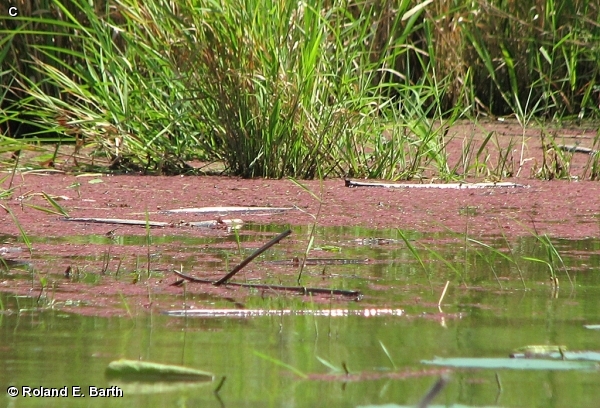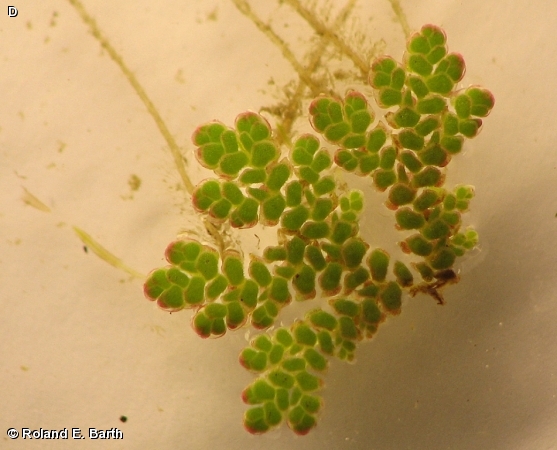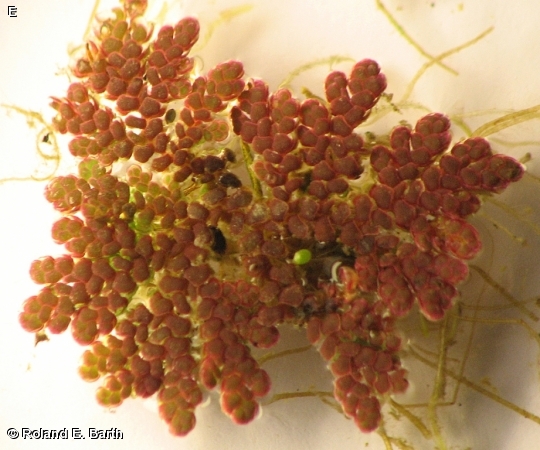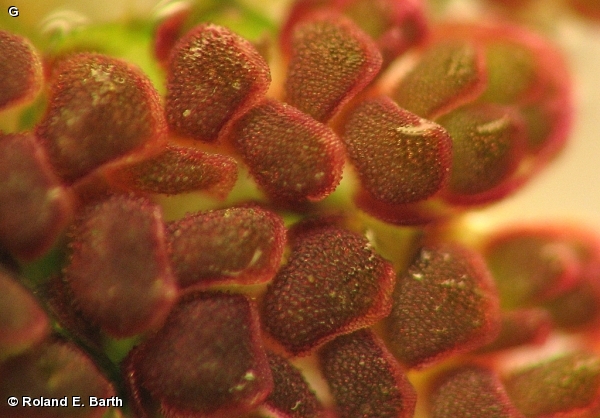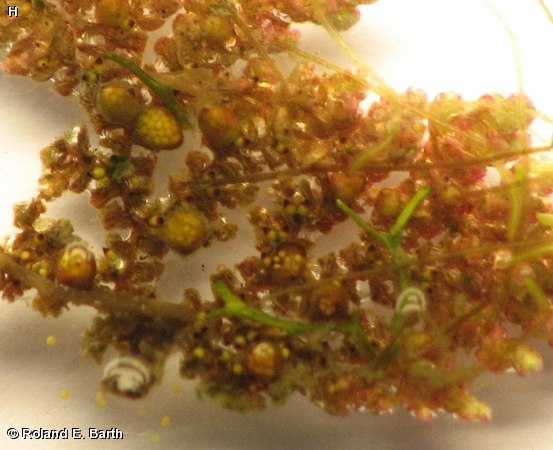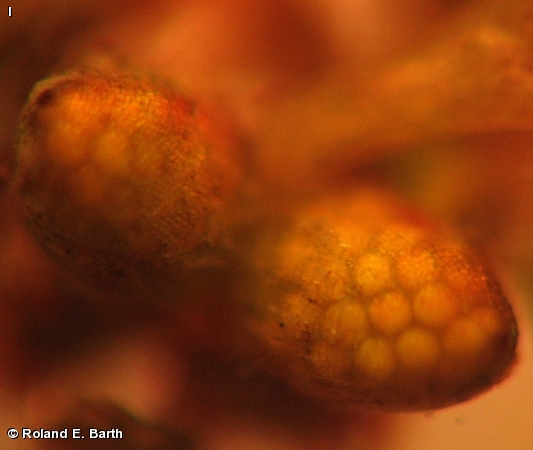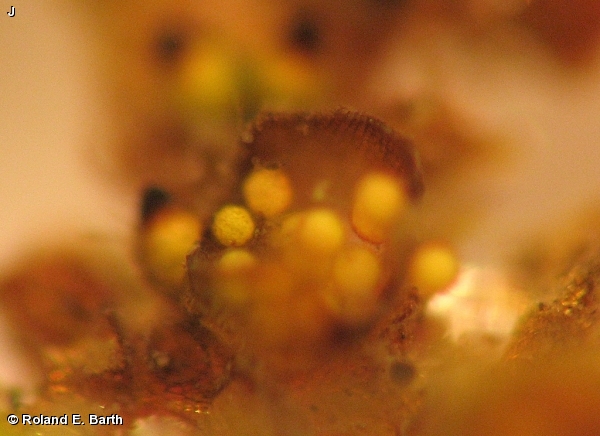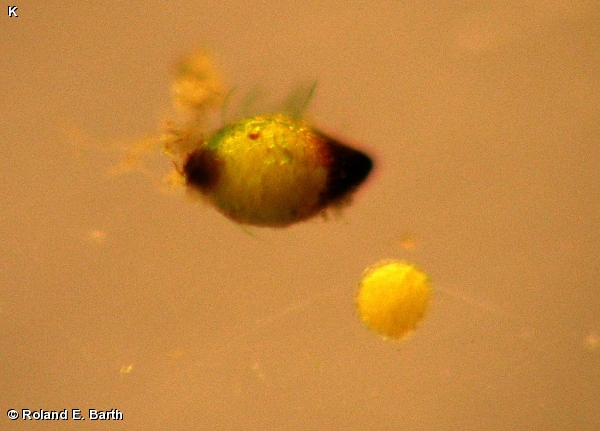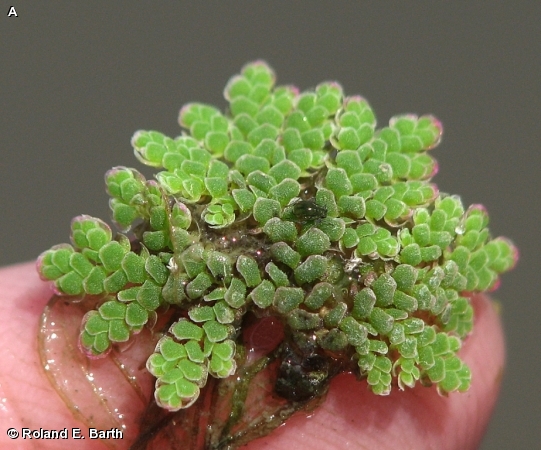
This aquatic plant is actually a fern, but it does not resemble other ferns in appearance. It comes in either green (A) or later in the season reddish-purple (B). The reddish-purple color is produced by cyanobacteria (Anabaena azollae). It has roots dangling down, similar to the Duckweeds, and floats in large mats, usually along shores of fairly still, shallow water (C). A closer examination with a macro lens in a controlled setting (D,E) – an exception to our standard procedures because of the unique structure of this plant – shows green or reddish scaly leaves on branched stems when seen from above (F,G). When viewed from below, a reddish, fertile plant shows the male sporocarps with numerous spherical microsporangia inside (H,I) and – barely visible in image (H) the smaller female sporocarp with their dark tips (also K). Image (J) shows a male sporocarp which has broken, releasing the egg-like microsporangia. Image (K) shows a single female sporocarp and a male microsporangium.
This plant was abundant on the Great Marsh in 2009, but its abundance varies greatly from year to year. It mainly reproduces vegetatively, by pulling apart (fragmentation). This species had not been documented in Sarpy County before, according to The Flora of Nebraska (2006). According to this recently published, authoritative reference, it is probably Azolla mexicana, but further microscopic study is required to be certain.
Azolla has been an important factor in growing rice in Asia, since it can fix nitrogen. North Vietnam had planted millions of acres of rice paddies with Azolla, when the U.S. prevented commercial fertilizer from being imported during the Vietnam conflict. Azolla thus substituted for at least 100,000 tons of fertilizer, according to a reference quoted on the Wayne’s World web site.
The content of NatureSearch is provided by dedicated volunteer Naturalists of Fontenelle Forest who strive to provide the most accurate information available. Contributors of the images retain their copyrights. The point of contact for this page is: Roland Barth.


